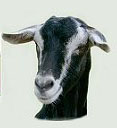|
Getting your first horse or pony
|
Henbane Henbane is a member of the Solanaceae family, which the potato, tobacco and tomato also belong. It was originated in Eurasia and was used in continental Europe, Asia and the Arab world then later spread to England in the Middle Ages. This plant now grows in North America and Brazil as well. Dating back to A.D. 1265 the origins of the word are still unclear but “hen” is said to have referred to death rather than a chicken. Other common names include Black Henbane, Devil’s-eye, Hog Bean, Jupiter’s Bean, Poison Tobacco and Stinking Nightshade. Henbane can be found mostly in wasteland, sandy places, by roadsides, on rubbish heaps and near old buildings. This plant is sometimes annual and usually flowers in July or August. They bloom with a yellow flower and can grow to a height of 1 to 2 feet in the summer. The leaves spread out flat on all sides from the top to the root with an egg shape and are sharply toothed. The leaves are normally a gray/green color and are covered in sticky hairs. Toxic to Horses Henbane is toxic to most animals in low doses including horses, ponies, sheep, goats, dogs, cats and many other farm animals. In some cases henbane is known to have been fatal. The whole plant is toxic, roots, flowers, leaves and seeds. It is also toxic to humans.
Symptoms Animal symptoms include bloat, labored breathing, convulsions, cyanosis, elevated heart rate, in coordination, pupil dilation and restlessness. Humans who ingest this plant will experience symptoms of hallucinations, dilated pupils, restlessness, flushed skin, dry mouth, coma, confusion, nausea and death.
Poisonous Plants | Horse Health
|
||||
|---|---|---|---|---|---|
The Material contained herein may not be reproduced without the prior written approval of the author. Contents & Graphics Copyright © Horses With Amie (C) 2006-. All Rights Reserved. Our work is not Public Domain. |

